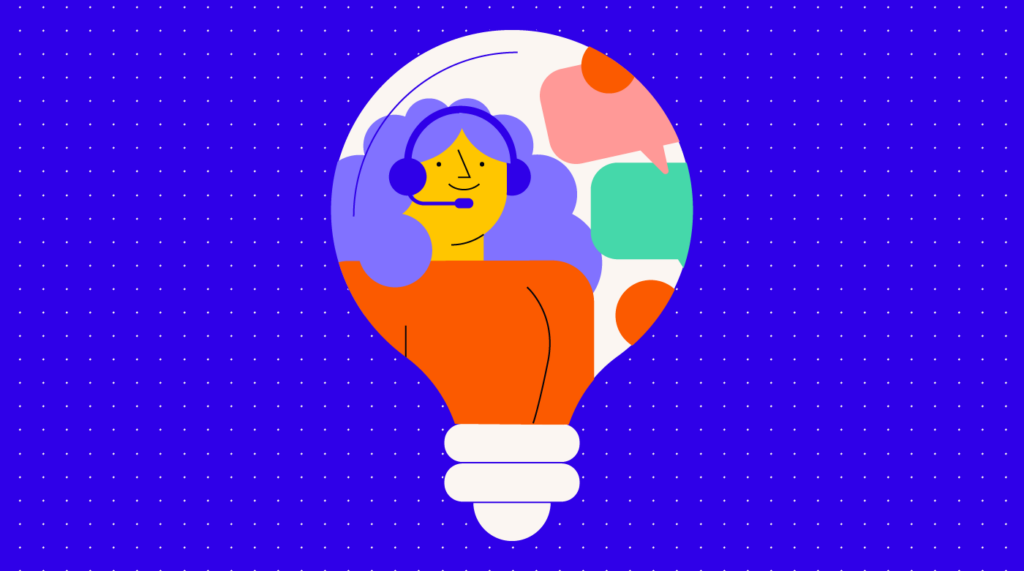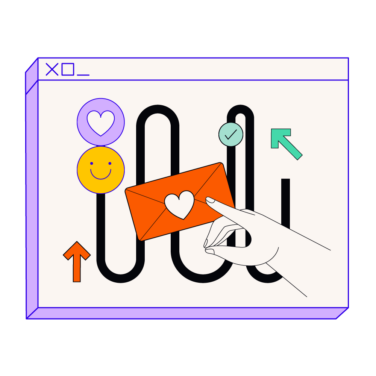Nearly half of all customers report that one poor service experience is enough for them to cut ties with a brand. Hiring the right people is your best defence against poor service, but even the best reps need ongoing training so that they're equipped to handle difficult situations with finesse. We compiled this list of innovative customer service training ideas to help your team members deliver great customer service and build customer satisfaction.
Which Customer Service Training Ideas Will Be Outdated in 2024?
If you want to be known for having the best customer service possible, you need to stop using the same training techniques that have been around for decades. Drop these methods and training materials from your customer service training program repertoire right away:
- Asking team members to act out their job duties
- Forcing customer service professionals to sit through boring PowerPoint presentations
- Using the lecture method of sharing information
- Delivering training sessions that aren't interactive
8 Great Customer Service Training Ideas to Transform Your Team
1. Customer Simulations
Get your team members to step into a customer’s shoes. Instead of having your customer support team act out their job roles, try having them pretend to be customers. This type of training gives your customer service reps an idea of what it's like for customers to interact with your brand and its products or services. For best results, have each employee complete more than one action from a customer’s perspective. They might call your company to ask a question or attempt to purchase a product on the company website.
Customer simulations are effective because they provide insight into common pain points and other customer issues. They also help team members improve their active listening skills, ask the right questions, target customer needs, address common customer complaints, and build positive connections with them while improving customer support skills.
Related read: Best Idea Management Software Systems
2. Product Demo Day
When you hire new customer service representatives, do you hand them a product manual and expect them to memorize everything in it? If so, here’s a much more effective onboarding strategy: try holding a hands-on demo with new hires to help team members get familiar with a product's features and benefits.
Product demos are highly effective because they give team members the product knowledge and hands-on learning they need to answer complex questions. If a customer calls in with a question about one of your company's products, they expect the service rep to have the answer. They don't want to wait while a team member pages through a manual or searches an online knowledge base—trust me, there’s no faster way to lose a customer’s confidence! Customers want to talk to someone who knows how the product works and understands how to solve problems quickly.
During a product demo, team members should learn how to set up the product, use the product's main features, and troubleshoot common problems. They can use that knowledge to deliver better customer service.
3. Improv Day
"Yes, and..." is a fundamental concept in improvisational (or ‘improv’) theatre. According to this concept, a performer should accept what their partner says and go with the flow. Starbucks has been incorporating a version of this into their customer service for years by training baristas to “just say yes” and find a solution that surprises and delights the customer. You can improve your customer service training by bringing the same principle into your customer service training strategy.
During the training session, give each employee an improv scenario. Encourage participants to follow the "yes, and..." principle instead of offering reasons why they can't accommodate the customer. Here's an example of how the conversation might unfold:
Employee 1: "I was supposed to receive my order on Tuesday. Now it's Friday, and it's still not here. I want a refund!"
Employee 2: "I can definitely look into that! Are you referring to order #12345 placed on December 13?"
Employee 1: "Yes. You promised it would be on time. I want a refund right now."
Employee 2: "Great news! I see here that your order was delivered one day early, but it was held at a postal outlet. Here is the tracking number, you still have a few hours before that postal outlet closes for the day."
Notice that Employee 2 didn't say no or tell Employee 1 it wasn't possible to issue a refund. They went with the flow of the conversation and salvaged the relationship by focusing on what they can do. Improv exercises help employees improve their communication skills and prepare for tough conversations, making them highly effective for customer service training sessions. As a customer service training game, improvisation also has the benefit of being an excellent team-building exercise.
4. Virtual Escape Room
Collaboration is essential for excellent customer service. When employees work well together, it's much easier to handle escalations and defuse tense situations with high-value customers. One way to improve collaboration is to have team members complete a virtual escape room. This idea works especially well for remote customer service teams, as employees from all over the world can participate.
In a virtual escape room, team members work together to solve puzzles or overcome challenges. This activity helps employees improve their communication skills, learn how to resolve conflict effectively, and get comfortable sharing their ideas. Just as with improv, this is also a great team-building and training exercise. Here are some great virtual escape room options you can start with.
5. Competitor Research
During your next training session, experiment with having team members conduct competitor research. This could take the form of visiting a competitor's website or calling a competitor to inquire about one of their products.
Conducting competitor research lets employees gain valuable skills that can help them handle escalations appropriately or even prevent customers from abandoning your business. For example, a team member who has a frustrating experience with a competitor learns what not to do if they want to deliver a positive experience.
6. Customer Interaction Debriefs
When it comes to training new employees, experienced team members are one of your best resources. All the manuals and fact sheets in the world aren't a substitute for learning from someone with extensive experience handling challenging interactions.
Instead of booking a trainer to lead your next session, have one of your most successful team members walk everyone through a recent interaction that started out badly and ended well. They can describe the customer's problem, and explain what they did to solve it. They should go into detail about how they turned the interaction from a negative one into a positive one.
These debriefs are effective because they give team members real-world examples of how to handle challenging interactions. Team members are likely to be inspired by their colleague's success, giving them more confidence as they start handling service interactions on their own. This tactic has the added benefit of recognizing high-performing employees and establishing them as a mentor to other team members.
7. Customer Service Charades
If you have a brick-and-mortar store, team members need to know how their facial expressions and body language affect their ability to satisfy customers. Playing charades is a great way to focus on nonverbal communication. Instead of having employees try to guess the name of a song or a movie, have them act out a variety of customer service scenarios.
Here are a few example scenarios to get you started:
- An angry customer is demanding to speak with a supervisor.
- One of your newer employees has to escalate an issue to a more experienced team member.
- A customer complains that they were overcharged for their monthly subscription to one of your services.
Team members learn how to control their facial expressions and use appropriate body language when interacting with customers in person, making charades an effective training activity.
8. Team Mentoring
Feedback helps team members build confidence and identify potential areas for improvement. To increase the amount of feedback provided, consider starting a team mentoring program. Mentoring pairs experienced and inexperienced team members, ensuring a steady flow of feedback.
Have mentors give constructive feedback and advice on polishing specific skills. Depending on the type of feedback provided, new team members may improve their communication skills, get better at overcoming customer objections, or learn when to escalate an issue. Team mentoring programs are also effective for building camaraderie.
What Kinds of Customer Service Training Ideas Are Coming in 2024?
1. Proactive Customer Engagement
Many customer service interactions are reactive. That is, they don't occur until a customer reaches out to your company. In 2024, the focus will shift from reacting to being proactive. CX professionals need to be aware of the shift, so they can get the right people in place and make sure team members have adequate training.
2. Remote Customer Service
Companies are looking for ways to cut costs and attract talented employees. That means more employers will offer remote work opportunities to customer service agents. As a CX professional, you need to be aware of this trend to ensure you have the resources needed to accommodate and train remote employees.
3. Advanced Chatbots
Chatbots are more intelligent than ever. As a result, more companies will be implementing online chat in 2024. One major benefit of using intelligent chatbots is that they can handle simple requests, freeing up your team members for more complex interactions. To prepare, start exploring your chatbot options now and make sure that team members receive the training needed to handle more challenging service scenarios.
Build a Skilled Customer Service Team
Got something out of this article? Get more tips like these by subscribing to our newsletter.


